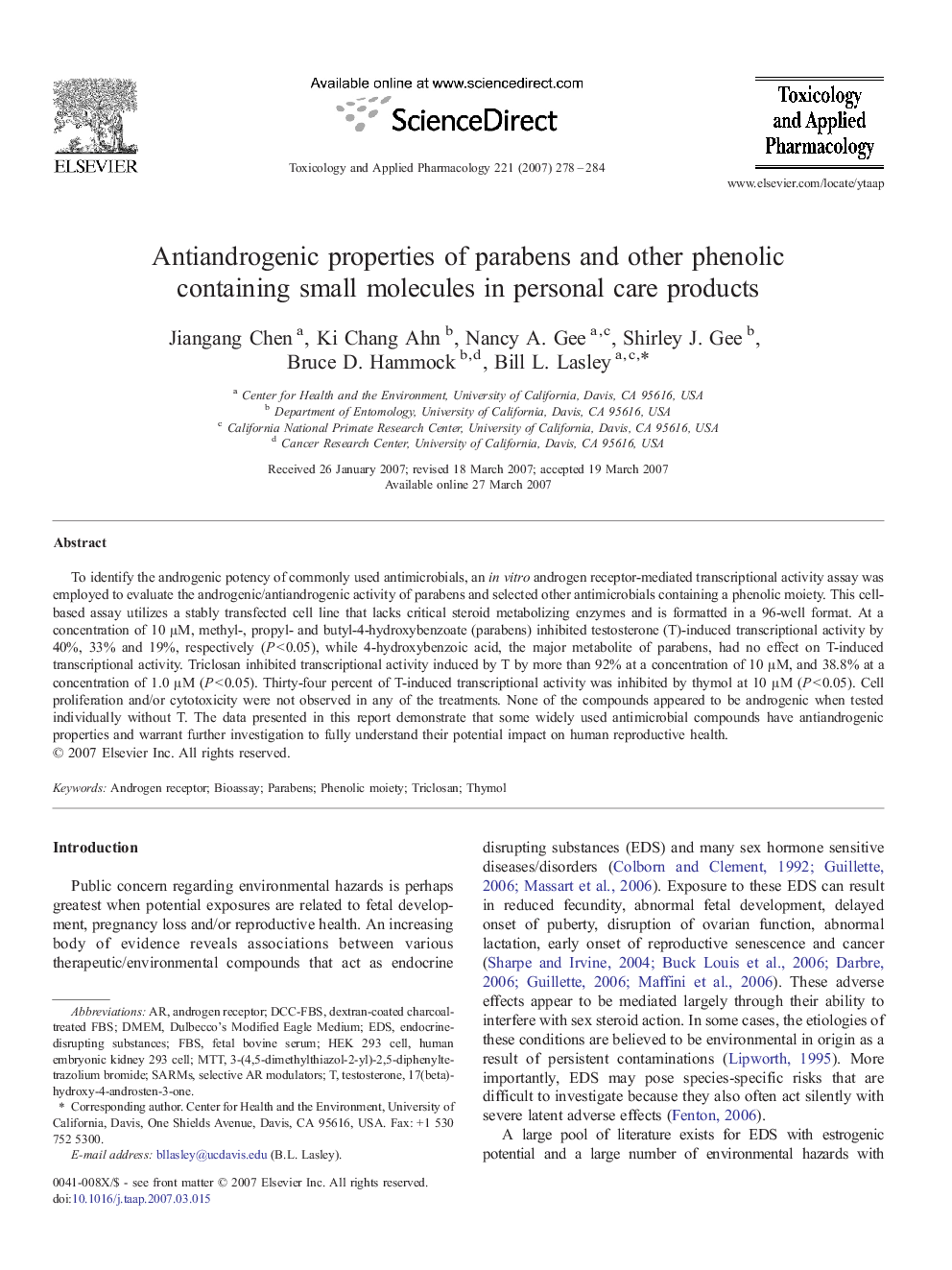| Article ID | Journal | Published Year | Pages | File Type |
|---|---|---|---|---|
| 2571292 | Toxicology and Applied Pharmacology | 2007 | 7 Pages |
To identify the androgenic potency of commonly used antimicrobials, an in vitro androgen receptor-mediated transcriptional activity assay was employed to evaluate the androgenic/antiandrogenic activity of parabens and selected other antimicrobials containing a phenolic moiety. This cell-based assay utilizes a stably transfected cell line that lacks critical steroid metabolizing enzymes and is formatted in a 96-well format. At a concentration of 10 μM, methyl-, propyl- and butyl-4-hydroxybenzoate (parabens) inhibited testosterone (T)-induced transcriptional activity by 40%, 33% and 19%, respectively (P < 0.05), while 4-hydroxybenzoic acid, the major metabolite of parabens, had no effect on T-induced transcriptional activity. Triclosan inhibited transcriptional activity induced by T by more than 92% at a concentration of 10 μM, and 38.8% at a concentration of 1.0 μM (P < 0.05). Thirty-four percent of T-induced transcriptional activity was inhibited by thymol at 10 μM (P < 0.05). Cell proliferation and/or cytotoxicity were not observed in any of the treatments. None of the compounds appeared to be androgenic when tested individually without T. The data presented in this report demonstrate that some widely used antimicrobial compounds have antiandrogenic properties and warrant further investigation to fully understand their potential impact on human reproductive health.
